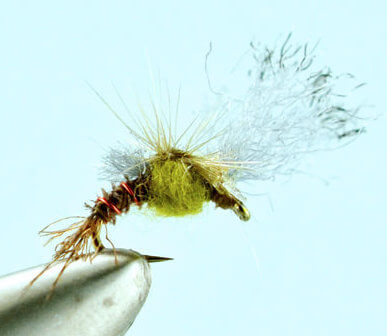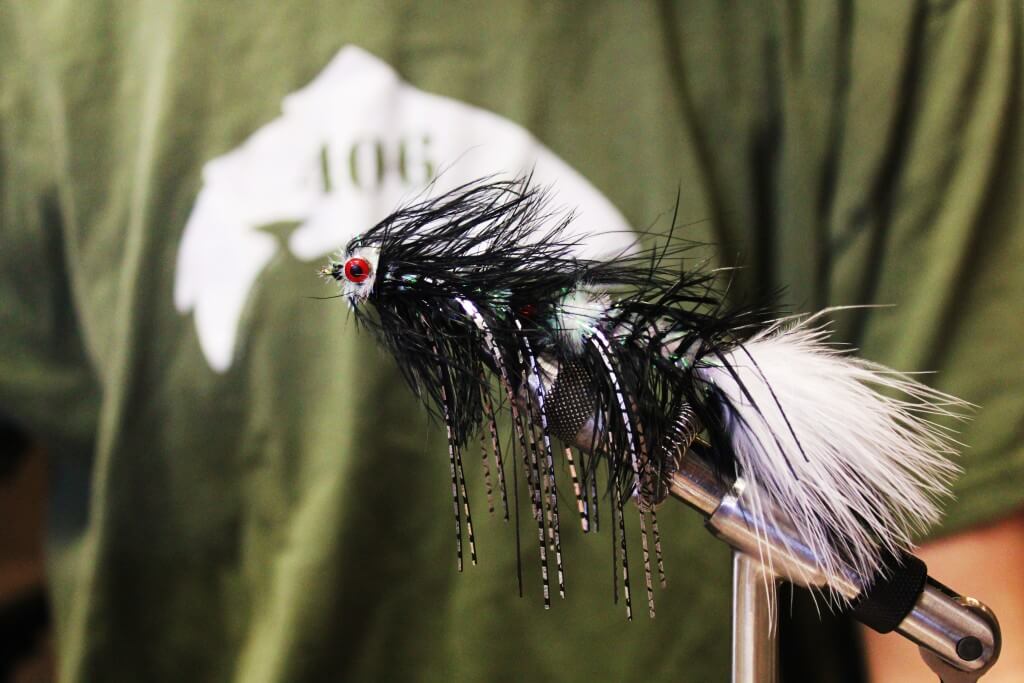Skwala – March Brown – Blue Winged Olive
For so many anglers, fly fishing Montana in March is the start of their season. Missoula, MT has a great skwala stonefly emergence, as well as excellent BWO’s and Western March Browns. You can be assured of decent to great fishing from the third week of March through the start of run-off.
Check Your Gear
Our first tips start before you hit the water. Buy your new fishing license. Get your equipment out. Check your tippet spools, and floatant. Throw a little oil on the reel, and make sure all the guides are still on the rod. Look at your fly line. If you need a new one, get a tin of mucilin and clean the line. Unless the line is physically coming off the core, replace the line when the weather is warmer. Cold doesn’t help a fly line. No matter what happens, put a new leader on your line. That nasty stub from last season needs to go! Take a quick glance at flies, bootlaces and indicators, and get yourself ready for your first day. Don’t use your first day finding out what you need for the second!
If your waders have a leak, now’s when you’re going to find out! Make sure you let them dry completely (a hair dryer accelerates the process) before patching. Make sure to back the hole up with newspaper or a plastic bag, so the patching goo doesn’t seep through the hole and glue your waders together.
Be Prepared For Weather
Spring is always an unpredictable season, and more so in Montana. You can be in shirt sleeves one day and snow the next. It sounds melodramatic, but not being prepared for the weather can be dangerous. Dress in layers, and just because the sun sticks its nose out, don’t go dumping all the fleece in the car. It’s not a bad idea to have some spare clothes in the vehicle, in case you take a header. Wet clothes and cold weather are not a perfect match. If you’re floating, stick the spare clothes in the boat. Dry clothes don’t do you much good 7 miles from the car.
Focus On The Right Water
The first days in March will find anglers looking for Skwalas on the surface and not finding them. Like it or not, it takes an exceptional spring to get them moving before the third week. Anglers out in early March are in for a biology lesson. Trout hold in different water in Winter, and early March finds fish in their winter lies. The quick version? Cold water holds more oxygen, and slows down a trout’s metabolism. Combine the two, and trout will be found in slower water that may not hold as much food. It’s water you might pass by in warmer weather, but it holds trout now. To add to the mix, if the sun hits the water and activates the trout’s metabolism, they move from winter to spring lies during the same day. Be prepared to put your fly in a lot of different places in early March to find trout.
Try Something New
When the insects start moving, those first good fly fishing Montana in March is pretty fun. The trout are relatively unfished, and feed freely. This is definitely a case of the early bird getting the worm! But especially on the Bitterroot River, it doesn’t last long. What was a bit of a secret 20 years ago is now well known, and you can expect some company when you’re on the Bitterroot. It has the best Skwala hatch in the area, and gets a fair few anglers. As with any great hatch, it can pay to be a contrarian angler. When the Bitterroot is on fire, hit the Clark Fork River or Rock Creek. The fishing won’t be as good, but you know where most of your friends will be! It’s not like Rock Creek or the Clark Fork River stink, it’s just not mega-massively epic. Which the ‘Root can be. It’s a trade-off.
Here’s a Rock Creek Road tip. Unless you have chains, 4WD, winch and tow strap, you want to hear that others have made the trip from Philipsburg down to the mouth. You don’t want to be the one who finds out the Hogback is still iced over as you slide down sideways. We are always monitoring the roads, so if you have questions, get in touch. In a car, you’re either fishing the top of Rock Creek, or the bottom during March.
Check Water Levels
When it comes to fly fishing Montana in March, it is mostly low water tactics interspersed with some high water events. If you’re not sure, check the Missoulian Angler Fishing Report or head to the USGS web site and see what the water is doing. Rising water can be caused by the first few days of low level snow melt, and that’s compounded by rain. Before you head out, check the water levels.
In March, the low level rumble is always Skwala, Skwala, Skwala. When is the emergence- Have you seen any rises? That attitude will miss a lot of really good fishing. When the sun hits the water and gets the fish a bit more active, a well-placed streamer can be incredibly effective on trout looking for food after a long winter’s feeding hiatus. As always, let the fish tell you what action they want, but in early season, start your streamer slow and stay there for a bit. While the fish are hungry, they might not respond well to a streamer ripping past them. Give the trout a chance to see the fly and eat it. It’s been our experience that a smaller streamer is more effective in the early season, so unless the little guy is getting ignored, leave the big boys in the box.
Streamer Time
Early season nymphing in Montana is absolutely spectacular. Nothing but midges have hatched since October, and the bottom is chock full of tasty morsels. The skwalas, Nemouras, Western March Browns and Spring BWO’s are fully grown and on the move, while the other insects have all grown to a size where they’re a valid food form for the trout. (Reference the BioMass blog here)In early March, if you don’t see anything happening on the surface, don’t beat the water to a frothy lather. Put on an indicator, or get out the Euro stick and start working the bottom. That’s where the fish are in the colder water, and they’re gorging on the winter’s growth. It’s not high summer- few fish are going to travel to the surface to make you happy. Now is the time to go where the fish are.
Bring Light Tippet For The BWO Hatch
When the fish do start to move to the surface, be ready with a longer leader and finer tippet. The water is low and clear in March, and the fish are just as spooky now as they are in August. A random rise form will often mean a skwala or nemoura, while steadily rising fish are often on the BWO’s. BWO’s are notorious for hatching in the worst weather, so if it’s cold and cloudy, have your BWO’s and 5.5 or 6X ready. It doesn’t take long for the fish to get a little snotty to the BWO’s, and a lighter tippet gives you a better drift.
Don’t Forget About The Nemoura
The nemoura gets a special mention here. A black stonefly in a size 16- if you’re not looking for it, you’re NOT going to see it. But the fish certainly do, and in March they emerge in droves. When you come across some prime water, or have seen some random rises, tie on a skwala for sure. But if it’s not doing all you think it should, drop a nemoura about 16” off the back. You’re going to be surprised at how many fish the smaller nemoura will pull to the surface. Double dry takes a bit of finesse to pull off, but it pays off in March when you can’t tell if it’s a skwala or a nemoura the fish are taking.
Final Thoughts
Many fair weather anglers have been waiting for March fly fishing in Montana for the last 5 months, and when the weather gets decent, hit the water. Check your terminal tackle before the first journey, and make sure you have the clothing needed to handle a Montana Spring fly fishing adventure. Colder water will have the fish in their winter lies, and they’re not as aggressive as they were in the fall. Don’t wait for the trout to come to you, go where the trout are. While the dries will be there at some point, the best nymph fishing of the year is there for the entire month. Get your fly where the fish are, and you’ll start the season off with a bang, not a thud!




